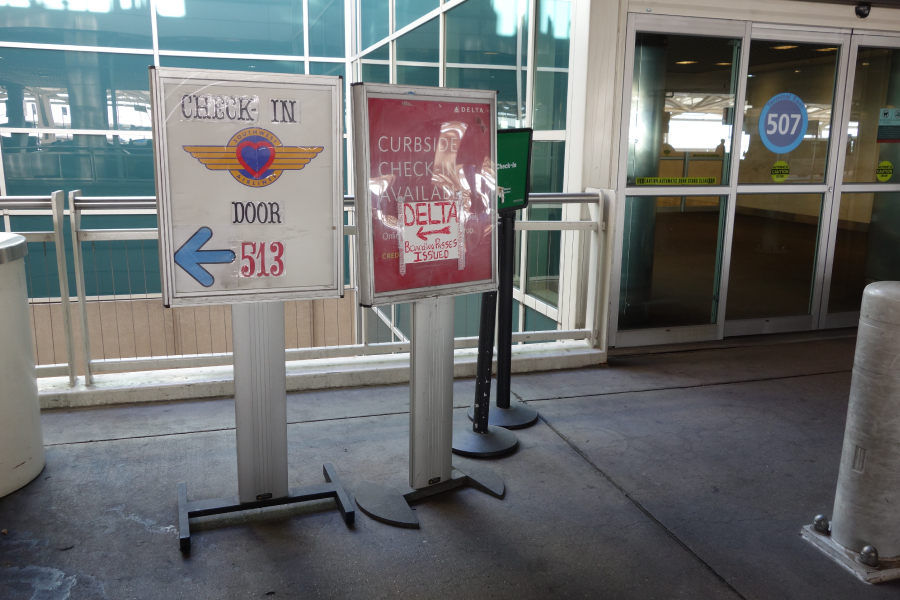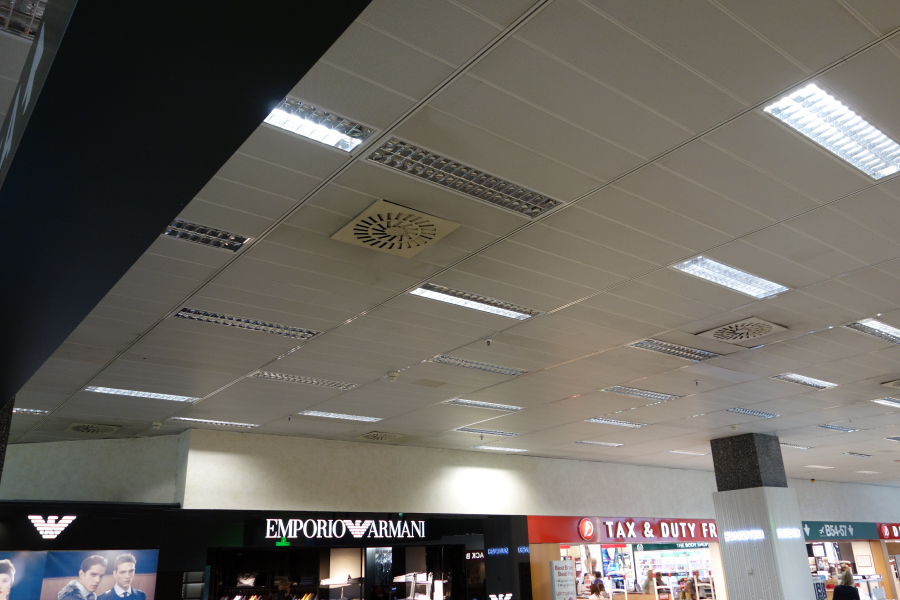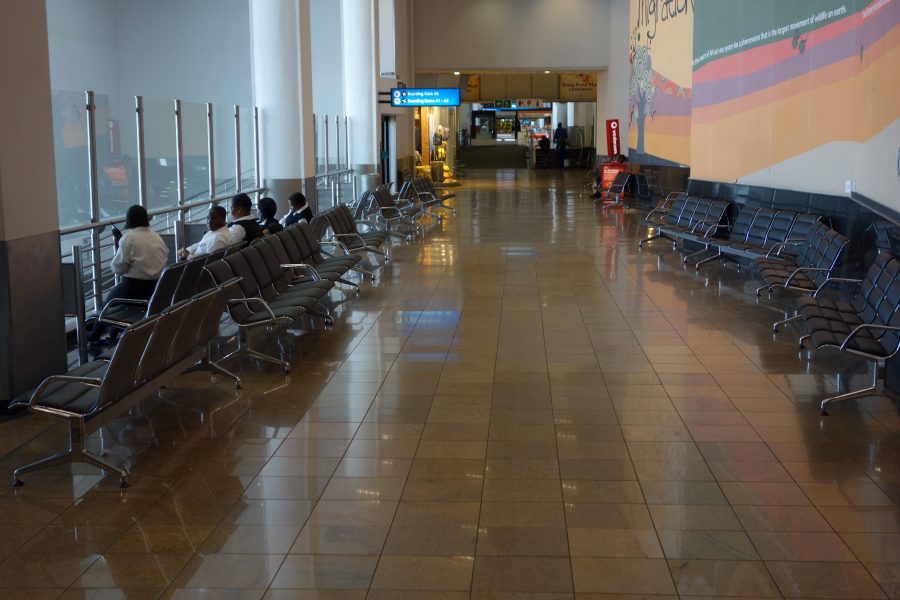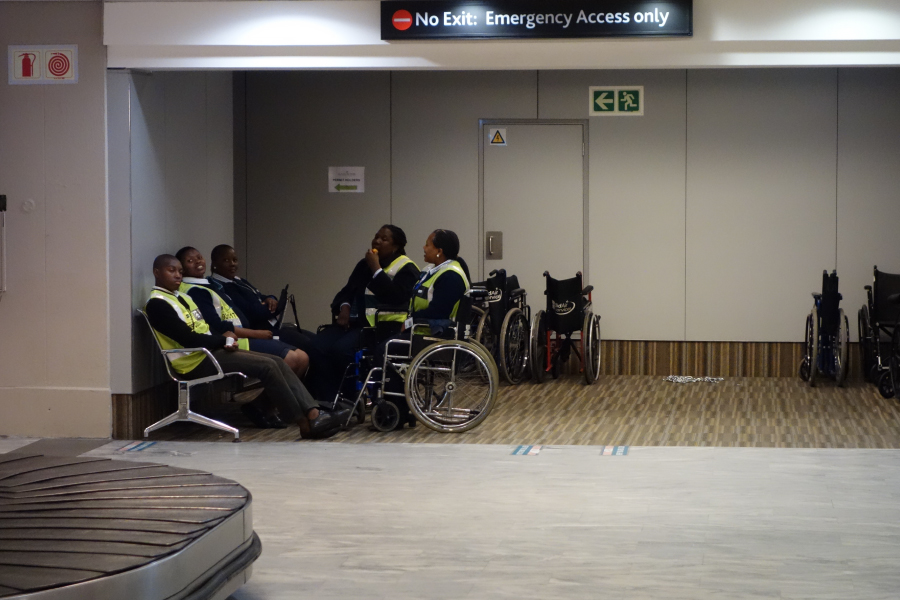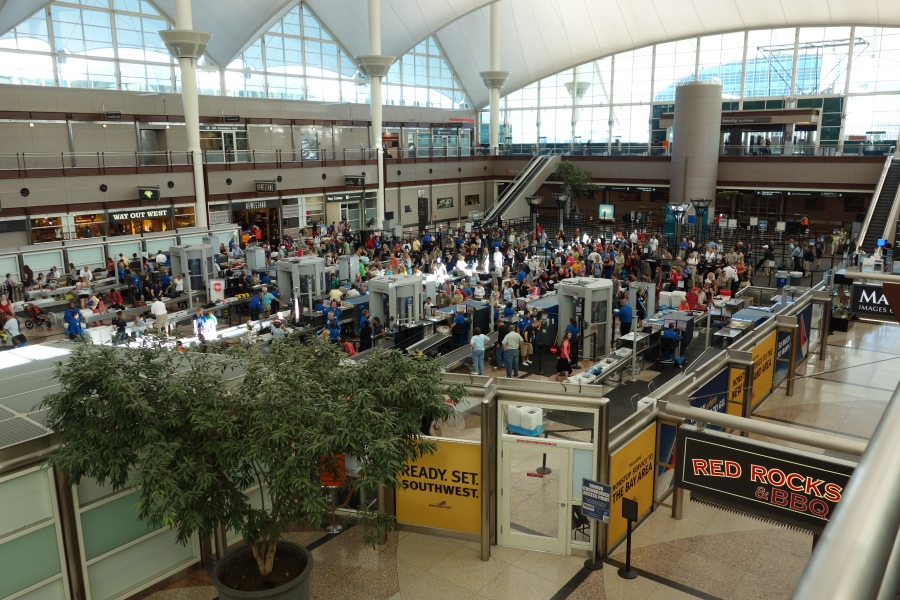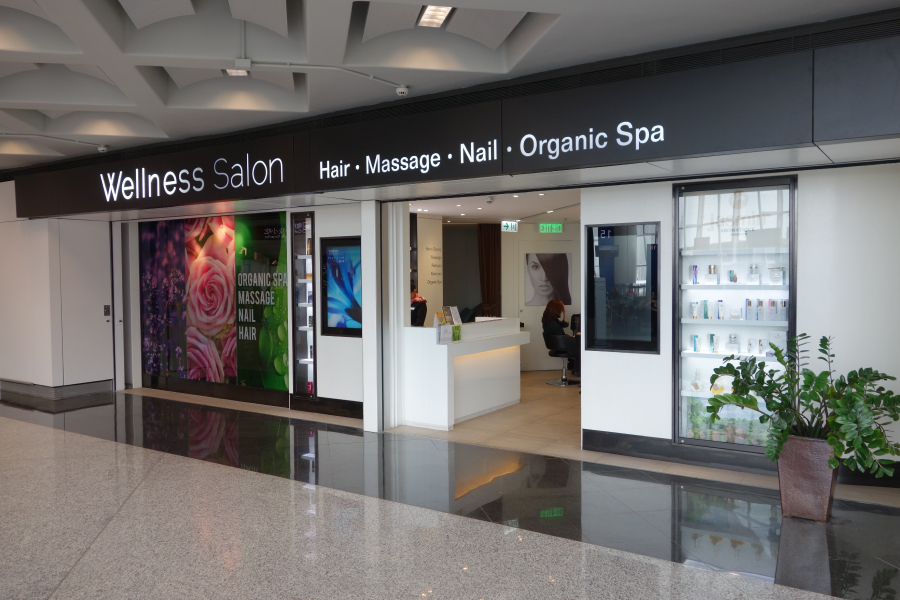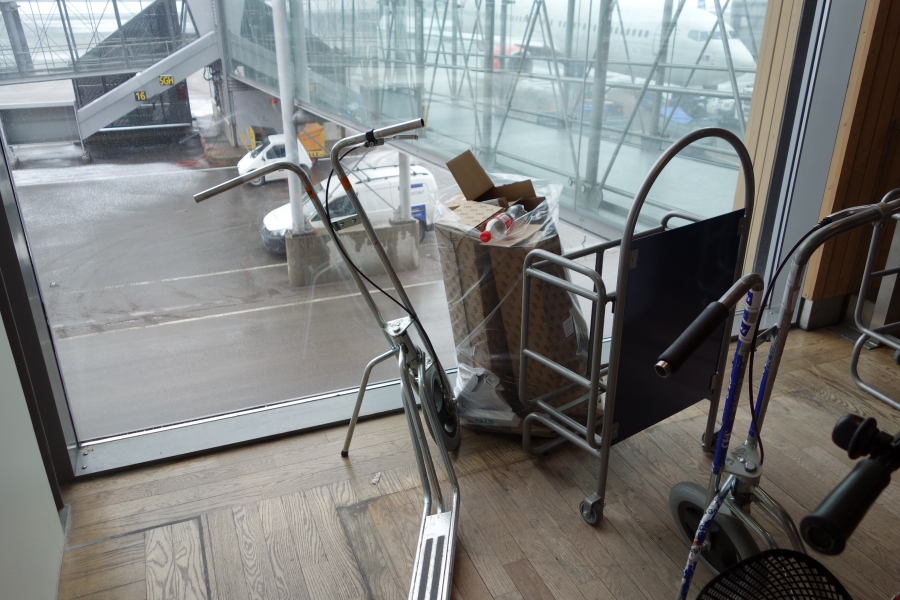
After a while, clutter is unnoticed – bags of rubbish and mobility scooters left in plain sight in the terminal.
For most airports, it is possible to significantly improve ambience without spending a large amount of money. To do this, you first need to get to grips with what causes poor ambience and then work on creating a great ambience.
Signs of poor ambience
The symptoms of an airport with an ambience problem are very similar all over the world. The most common signs are:
- Clutter
- Dirty facilities
- Maintenance can no longer cope
- The airport is obsessed with facilitation processes
- Passengers waiting outside their assigned gate area
Internal explanations for poor ambience are equally similar:
- Budgets are tight
- Commercial is taking over the airport
- Airlines have too much influence over terminal management
- The architect has a veto over interior design
In our experience, the root causes of ambience issues are often ultimately people issues. Firstly inertia (“we’ve always done it this way” or “it’s always looked like that”), secondly silo mentality – different departments fighting for supremacy in the terminal and thirdly staff being unwilling or unable to highlight poor performance internally.
Many airports perform at a low level because they’ve always performed at a low level and no one at the airport has recognised or been willing to address the problem. No one has challenged the status quo. It often takes an outsider to highlight issues and demonstrate the true level of ambience as seen by the passenger.
First steps to improving ambience
The first step is to make a brutally honest assessment of your airport. This assessment should focus on four areas:
- Terminal interior – light, cleanliness, condition, colours, clutter, consistency.
- Staff pride
- Processes
- Making the passenger experience special and personal
Terminal
The Terminal interior is the most important factor in most airports. If the terminal ambience isn’t good, all passengers will see it and feel it. Cleanliness, tidiness and attention to detail are the fundamental building blocks great ambience; after that interior design, decor and architecture can make it great.
In terms of basic design and layout, passengers appreciate light and space, they also like long lines of sight so they can see where they are going. It should be easy to find the gate and there must be space to sit down at the gate. Wayfinding problems affect the most stressed passengers (occasional fliers) disproportionately, for this reason wayfinding issues swiftly become emotional. Passengers notice and dislike messy terminals, clutter, obstacles in their path, anything out of order and anything dirty.
Staff Pride
Staff pride or their feeling of attachment to their airport is essential for developing and maintaining good ambience. A lack of pride leads to a vicious circle of mediocrity with regard to maintenance, upkeep and attitudes. This can happen in modern facilities as well as old; if staff are not proud of their airport, they will not look after it and will not make any extra effort.
Passengers can sense when there is a lack of pride; it is obvious when staff are gossiping or sitting down / dawdling, but it is also seen in clutter, disorganisation, untidiness and cleanliness problems. When the passengers sense they are in an airport that doesn’t care, they don’t care either and drop litter or food, and generally do not respect the facilities. Conversely, staff and passengers who are impressed with the facility take great care not to litter or dirty it, so airports which have developed a great ambience benefit from all terminal users taking more care.
Facilitation processes
The processes (security, check-in, immigration etc) are important, but it is vital to recognise that they never create a good ambience. Processes only influence ambience negatively i.e, when there is a problem. The problem is invariably personnel or queue related and the queuing issues can be subtle. The queuing issues most often overlooked are:
- passenger perception of a long queue – eg long snake queues which may actually move quickly. Passengers need reassuring.
- a badly managed / poorly organised queue. Poorly managed queues can look like a mini-riot and be intimidating. Poorly organised queues – eg multiple single queues frustrate passengers intensely as new arrivals get to the front of new queues, some queues move faster than others etc etc.
- Visible queues outside the defined queuing area – eg back into the terminal – this scares passengers as they interpret this as a major problem which is not normal.
Short queues however do not equal great ambience, they just mean more time spent in the terminal. If the airport only focuses on its queues and the terminal has a poor ambience, the passenger will have even more time to regret the poor ambience.
A special experience
Creating a special, personal passenger experience should be the final step in building ambience. Unfortunately many airports try to jump straight to “being special” without laying the groundwork of the terminal interior, staff and processes. When the basics are poor, no one cares about the “special” flourishes.
When the basics are good, passengers do love the little extras that make a special experience and without them the ambience can be sterile. A special experience can be created in many ways – thoughtful little touches, local themes and culture, shops, restaurants, other diversions, architecture, art etc. Whatever your airport focuses on, the cornerstone of a truly great ambience is some elements of excellence. While it’s clear that most passengers may never purchase from a luxury goods store or go into a high class restaurant, the fact that they exist in the airport creates a sense of luxury, an ambience of aspiration and a sense of association. For those passengers that can make a purchase, or like to spend time on their food, the airport has created a reason to arrive earlier and created a memorable airport experience.
Analysing ambience
The majority of airports could swiftly and easily improve their ambience. Addressing basic ambience problems is simply a question of seeing your airport as if it were your first time. Very often this means reassessing basic standards of tidiness and cleanliness as well as understanding passenger perceptions. It is very easy for low standards to become acceptable and the norm because we tend to ignore that which we see every day.

